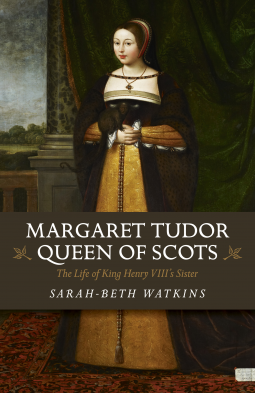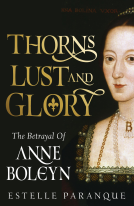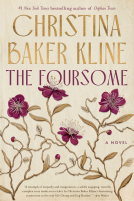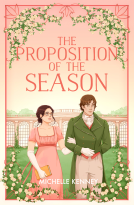
Margaret Tudor, Queen of Scots
The Life of King Henry VIII's Sister
by Sarah-Beth Watkins
This title was previously available on NetGalley and is now archived.
Send NetGalley books directly to your Kindle or Kindle app
1
To read on a Kindle or Kindle app, please add kindle@netgalley.com as an approved email address to receive files in your Amazon account. Click here for step-by-step instructions.
2
Also find your Kindle email address within your Amazon account, and enter it here.
Pub Date Dec 07 2017 | Archive Date Dec 08 2017
John Hunt Publishing Ltd | Chronos Books
Description
Advance Praise
Praise for Sarah-Beth Watkins' companion title The Tudor Brandons: Impressively detailed research combined with a remarkable storytelling talent on the part of author Sarah-Beth Watkins,The Tudor Brandons is a consistently compelling and exceptionally informative read from beginning to end.
Midwest Book Review
Marketing Plan
Sarah-Beth's life-long love of history and writing has seen her publish a variety of articles, and she is fast establishing herself as one of the world's most eminent figures in the field of Tudor biographical expertise. Sarah-Beth lives in Co. Wexford, Ireland.
Available Editions
| EDITION | Other Format |
| ISBN | 9781785356766 |
| PRICE | CA$18.95 (CAD) |
Average rating from 39 members
Featured Reviews
Margaret Tudor, Queen of Scots tells the turbulent life of Mary Tudor, Henry VIII’s older sister. Margaret Tudor’s marriage to James IV of Scotland was supposed to cement the relationship between Scotland and England. When James IV died leaving Margaret a young woman, Margaret realizes that her power in Scotland has waned. Margaret fights for her rights as regent for her son, James V and also hopes to forge peace between the two warring countries.
Margaret’s marriage to James IV of Scotland was supposed to be a glorious alliance between the two countries. Henry VII worked hard to make sure the marriage would take place despite James being almost twice her age. As a young teen, Margaret married James IV. Although James IV had his mistresses and had fathered illegitimate children, he was kind to Margaret. Margaret would have dances, music, and lively entertainment to occupy her. It all changed when James IV died in a battle against England.
Margaret lost her support when she married the Earl of Angus. Afterwards, Margaret had a long struggle trying to gain power within Scotland. Margaret also had to deal with a tumultuous relationship with both of her husbands who used her for their own ends. In political matters, Margaret had a complicated relationship with her brother Henry VIII, and her son’s increasing enmity against England. However, through all of Margaret’s turmoils, she was a determined woman who never gave up hope of seeing England and Scotland united.
Overall, this biography chronicles the sad life of Margaret Tudor. While Margaret's life was often fraught with tragedy and often made many mistakes as queen, she nevertheless fought for her son to have complete control of Scotland. Margaret Tudor, Queen of Scots is very sympathetic to its subject. The biography is well-written and engaging for the general reader to understand. Nevertheless, the book could be improved by going deeper into detail about the people surrounding Margaret Tudor’s life. Margaret’s husbands are briefly mentioned, and I didn’t really understand them. The story was also very short and it would have helped me have a better portrait of Margaret and her times if the book was longer. Still, Margaret’s life was very fascinating, and it is sad that she is mostly a forgotten woman in Tudor history.
 Angela G, Reviewer
Angela G, Reviewer
Margaret Tudor is English and is married to the King of Scotland, James IV, in 1503. Margaret's brother is Henry VIII. The plan behind the marriage is that Scotland will be an ally to England and will renounce its former "auld" ally, France.
I was thrilled to read a biography of a female ruler, knowing that Margaret Tudor's rule as Queen of Scotland was during a time of wars, palace intrigue, and Henry VIII's fickle alliances with religion in order to assuage his pursuit of a male heir.
The book is written in a matter of fact manner, and it is researched in detail as evidenced by the reference section. It was a quick read as it is less than 200 pages long.
Sarah-Beth Watkins has written other books on female rulers, and I look forward to reading more of her works.
 Michelle L, Reviewer
Michelle L, Reviewer
Margaret Tudor is in someways the forgotten Tudor. Daughter of Henry VII and Elizabeth of York, she was the Queen of Scotland for a time and it was through her that the Stuart kings ascended the throne. Yet in many modern retellings, including The Tudors, her story forgotten or worse, merged with her sister's tale.
This book attempts to remedy that. Using correspondence and chronicles of the time, Watkins weaves together a complex tapestry of the woman who was Margaret Tudor. Starting from her birth, we explore Margaret's world and her place in it. We meet everyone who would later influence her life and her choices. It helps explain her complexity and also her historical importance. And make no bones about it, Margaret is important.
I picked up this book because I have an inordinate love of Tudor history. It was my focus in college, and my historical focus in my post-graduate education. I was not disappointed. The author has clearly done their research (which is good considering this is a non-fiction book) and has gone out of her way to include little tidbits into Margaret's life.
I especially enjoyed the inclusion of her letters other documents which both humanized Margaret and also provided historical context to the book.
I'm happy to give this biography:
Four Stars.
*** I received a copy of this book through NetGalley
At school, history was always one of my most disliked subjects, I dreaded it. I found everything about it so incredibly tedious and clock-watched for the whole hour! As I have grown up, this has changed dramatically and I am very pleased it did so. I don't quite know when it changed but I do wish I could've enjoyed my history lessons more when at school. This book is part of my foray into the true history genre. I know there are many many more, a plethora of other related history that I would like to read too and would like to fill in the gaps in my knowledge of Kings and Queen's.
I see that Sarah-Beth Watkins has written a few more books on history that I am interested in reading. I thought that I may find this a tad boring but I was pleasantly surprised and will not hesitate to pick up similar books in future. I enjoyed the fact that it was every bit a true story, it meant I was learning something and as an enthusiastic learner I loved this aspect of it!
Margaret Tudor, the older sister of Henry VIII, had a extremely turbulent and thoroughly eventful life but as her brother Henry also lived a complicated existence Margaret has been written about a lot less. Sarah-Beth Watkins helps to remedy this by writing this fantastically engaging book full of meticulously compiled research and a readable and simple narrative. I love the including of Margaret's correspondence in the form of letters, it really helps in understanding Margaret's frame of mind and situation at the time they were written.
Margaret Tudor was Henry VIII's older sister and became the Queen of Scotland after her marriage to James IV in 1503. Her life was troubled and fraught with tension. She was continually caught between her country of birth and the country she ruled. After James IV's death, she made the disastrous decision to marry the Earl of Angus, threatening her regency and forcing the Scottish council to send for the Duke of Albany to rule in her stead. Over the years Margaret's allegiance swung between England and Scotland making her brother Henry VIII both her ally and her enemy at times. Although Margaret wished for peace between the two countries, these were tumultuous years and she didn't always make the wisest choices. Yet all she did, she did for her son James V and her absolute conviction he would rule Scotland as its rightful king.
There has always been a fascination with the Tudors but Margaret is usually in the background - mentioned in many books chronicling the lives of her relatives, this book puts her at the forefront and finally she is more than a peripheral figure. Her brother Henry VIII has received the most attention over the years. Even her sister Mary has been written about in depth while Margaret has continued to be a passing thought in period books. This is why I am glad her life has been written about so beautifully but it was far from a bed of roses.
Margaret's life was scattered with a lot of testing times and heartbreak and the author portrays this extremely well. It is difficult to imagine what it would have been like experiencing the amount of tragedies that she did. Although she could have easily given up and given in her strength shines through and she stands strong. These themes are prevalent in her letters to various people and in some cases they are rather emotional. Revealing her true thoughts and innermost feelings.
It is a rather short book which manages to have depth but not be bogged down in detail - this is a feat in itself. I loved this so much that I didn't want it to end in all honesty. I was sad to leave 16th century Scotland but I am positive I will return to it soon.
Highly recommended.
I voluntarily accepted an ARC of this book in exchange for an honest review. Thank you to John Hunt Publishing Ltd/Sarah-Beth Watkins and NetGalley.
Readers who liked this book also liked:
Silvia Moreno-Garcia
Historical Fiction, Literary Fiction, Sci Fi & Fantasy
Matt Browning
Entertainment & Pop Culture, Nonfiction (Adult), Reference


















